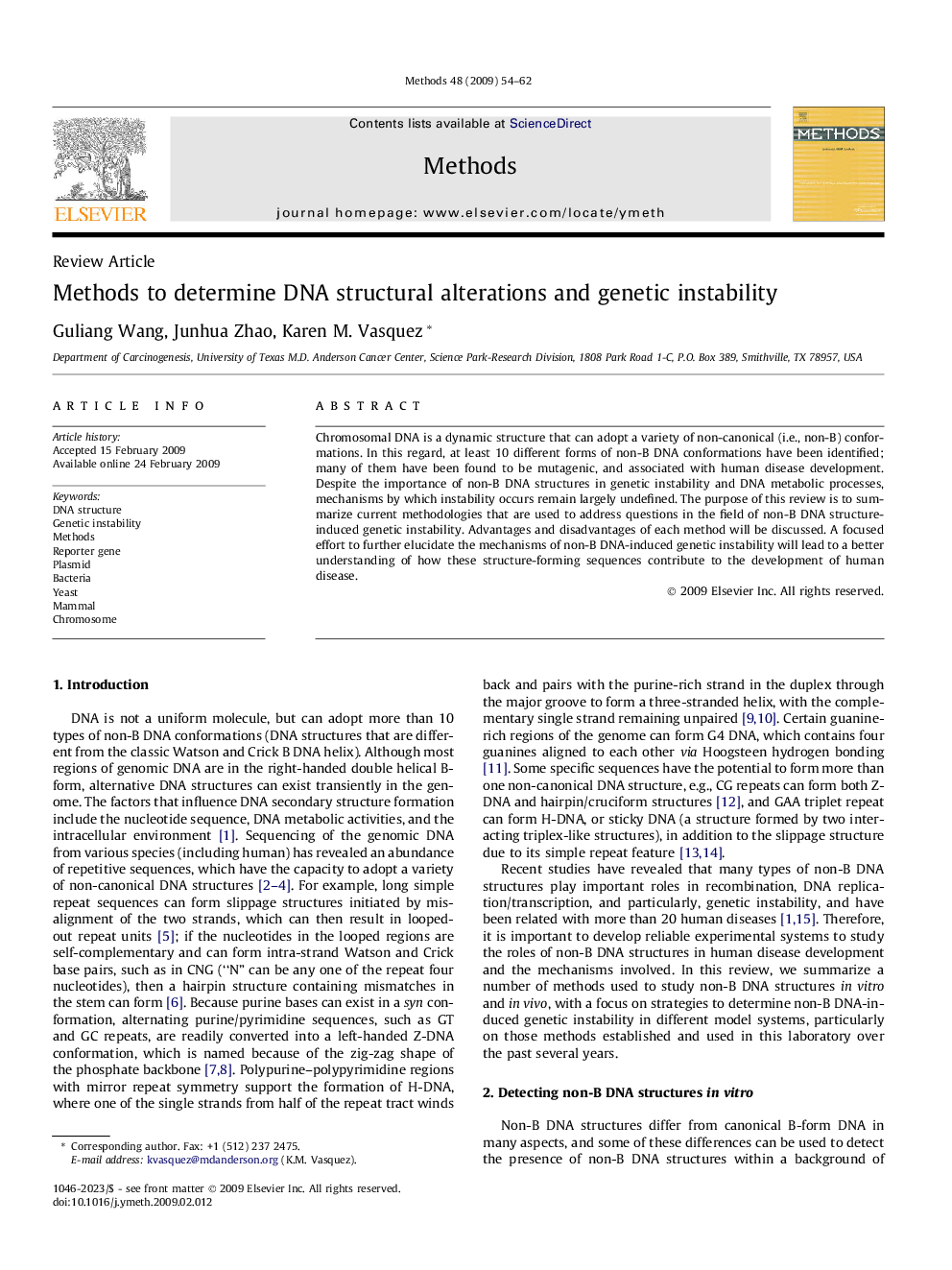| Article ID | Journal | Published Year | Pages | File Type |
|---|---|---|---|---|
| 1994165 | Methods | 2009 | 9 Pages |
Chromosomal DNA is a dynamic structure that can adopt a variety of non-canonical (i.e., non-B) conformations. In this regard, at least 10 different forms of non-B DNA conformations have been identified; many of them have been found to be mutagenic, and associated with human disease development. Despite the importance of non-B DNA structures in genetic instability and DNA metabolic processes, mechanisms by which instability occurs remain largely undefined. The purpose of this review is to summarize current methodologies that are used to address questions in the field of non-B DNA structure-induced genetic instability. Advantages and disadvantages of each method will be discussed. A focused effort to further elucidate the mechanisms of non-B DNA-induced genetic instability will lead to a better understanding of how these structure-forming sequences contribute to the development of human disease.
